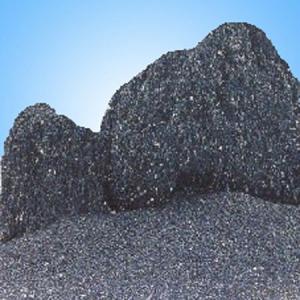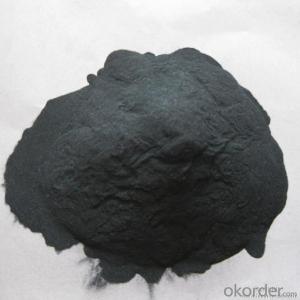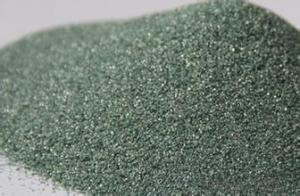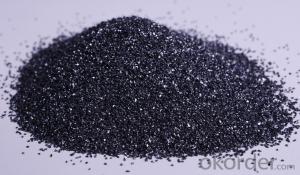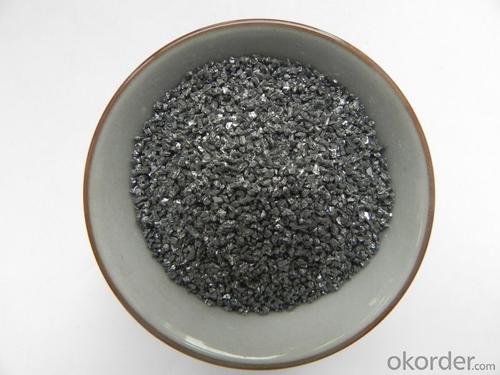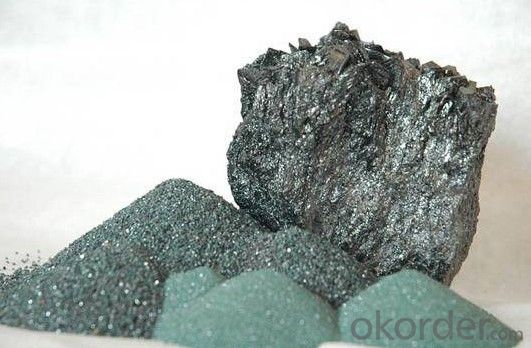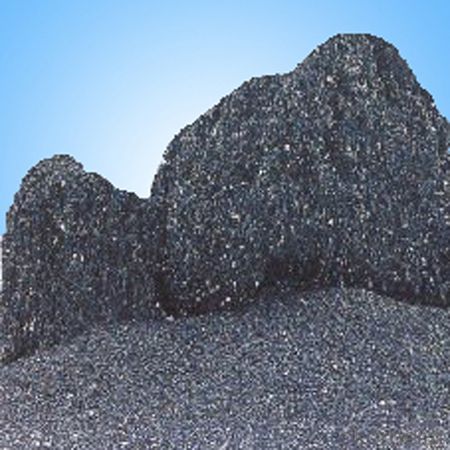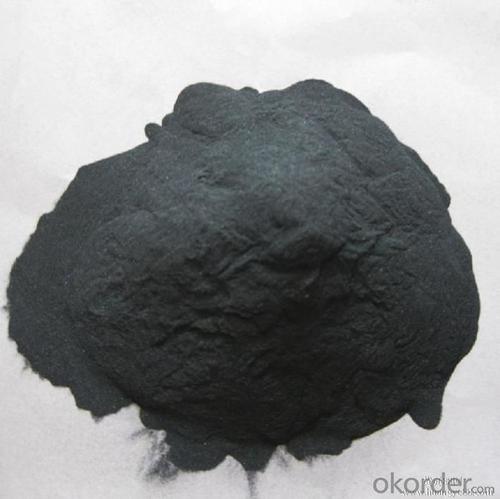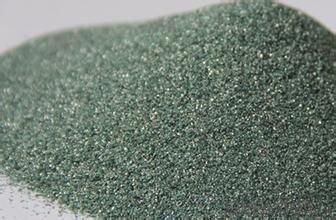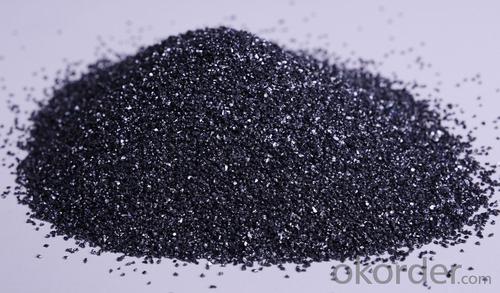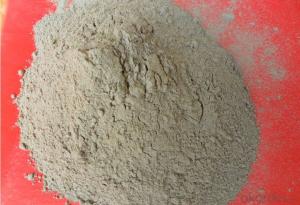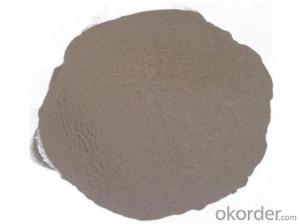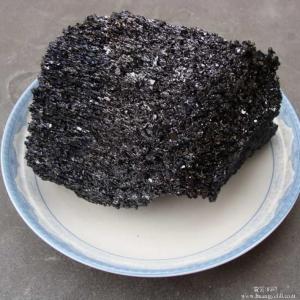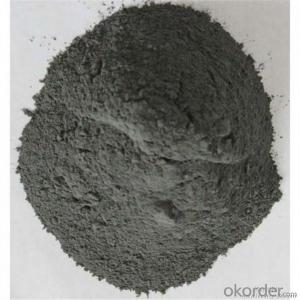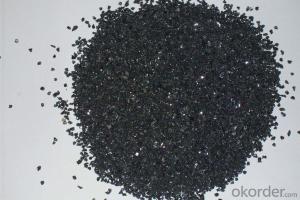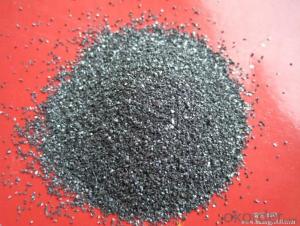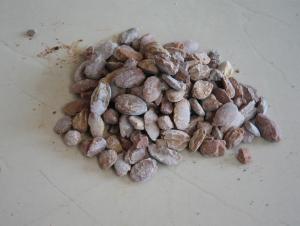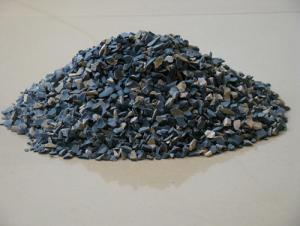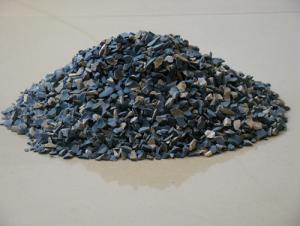Raw Materials for Refractory:SIC 97.8% Black Silicon Carbide 60 Mesh for Coated Abrasives
- Loading Port:
- Tianjin
- Payment Terms:
- TT OR LC
- Min Order Qty:
- 25 m.t.
- Supply Capability:
- 3000 m.t./month
OKorder Service Pledge
OKorder Financial Service
You Might Also Like
SiC 97.8% black silicon carbide 60 mesh for Coated abrasives
1.Structure of Silicon Carbide Description
Black Silicon Carbide is produced with high temperature in a electric resistant furnace from a mixture of quartz sand and petroleum coke.
Black silicon carbide is typically used for working on cast iron ,non-ferrous metals, stone, leather, rubber, and other materials which requires sharp cutting characteristics. The mineral is also used widely as a refractory material and metallurgical additive.
2.Main Features of the Calcined Bauxite
Its hardness is between that of fused alumina and synthetic diamond and mechancial intensity of it is also greater than that of fused alumina. It is brittle and very sharp and has a certain degree of electrical and heat conductivity.
3.Main usage of the Calcined Bauxite
1.Grinding non-ferrous materials, rock, stone, leather, rubber, finishing tough and hard materials
2.Bonded abrasive tools, lapping and polishing
3.Widely used as a metallurgical additive and refractory material
4.Refractory
4. Calcined Bauxite Images
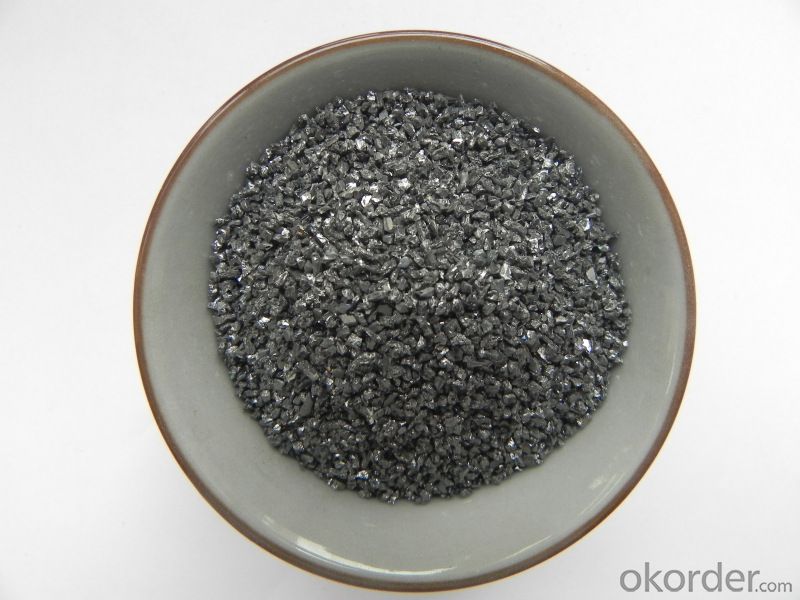
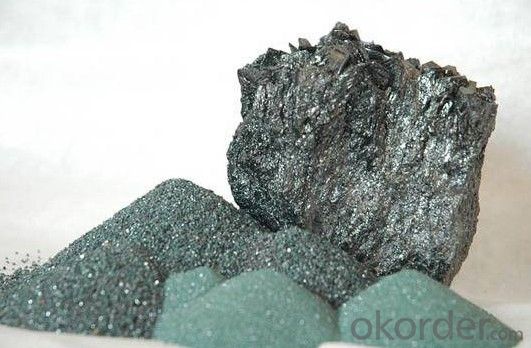
5. Calcined Bauxite Specification
Black Silicon Carbide is produced at high temperature in electric resistance type furnace with quarts sand and petroleum coke as its main raw materials.
Its hardness is between Aluminum Oxide and Synthetic Diamond.
Mechanical intensity of it is higher than Aluminum Oxide.
Black Silicon Carbide is brittle and sharp and has electrical and heat conductivity in some degree.
6.FAQ of Calcined Bauxite
1). Q: Are you a factory or trading company?
A: We are a factory.
2). Q: Where is your factory located? How can I visit there?
A: Our factory is located in Ningxia, China. You are warmly welcomed to visit us!
3). Q: How can I get some samples?
A: Please contact me for samples
- Q: what's the standard of fireproofing material?
- Class A1 is divided according to the combustion performance of GB8624-2006 building materials and products. Specific technical index requirements are: 1, the temperature rise ≤30 degrees;mass loss rate ≤50%; combustion duration time is 0; 2, main components, overall products, gross calorific value of external secondary components ≤2.0MJ/kg; any inner secondary component ≤1.4MJ/kg; (there are difference between homogeneous and non-homogeneous). Z802 building materials noninflammability testing furnace has to be used for testing technical indicators mentioned in test 1, using Z805 building materials combustion heat value to test technical indicators mentioned in test device 2.
- Q: How to understand qualitative and qualitative refractory materials?
- Such as amorphous refractory castable, referred to as bulk loading, cast material, ramming material, refractory clay etc., utensils and other special products. Amorphous refractory material products, refractory heat insulating bricks and experimental and industrial crucible, spraying materials, such as burning bricks, electric melting brick, turn it into required shape and process heat treatment in where it is used.
- Q: What are the applications of refractory in petroleum?
- It can be used in chemical filler.
- Q: How to use fireclay?
- Fire-resistant adhesive material is needed, its effect equals to the cement. Cement will certainly do.
- Q: who knows the requirements of refractory for forge furnace?
- Requirements are as follows: 1, it should have enough refractoriness and softening point under a fixed load. Because under the effect of electric arc, inner surface temperature in different parts of furnace lining can reach 1500 ~ 1800 ℃. 2, it should have strong slag resistance. Because slag and smoke at high temperature penetrate through furnace lining to its internal lining, causing the melting of refractory, organization stratification, and even peeling?off. 3, it should have good thermal shock resistance. Because in the process of steelmaking, openning the oven door and lifting the furnace lid will make temperature of refractories in the furnace lining change rapidly, it might happen peeling?off and cracking, causing the premature failure of furnace lining. 4, it should have sufficient strength, because the furnace lining will be shocked when being loaded, vibrated when being tilted, scoured by metals,molten slag and air flow when boiling. 5, smaller thermal conductivity, lower electrical conductivity. Commonly used refractories for electric furnace include magnesia bricks, dolomite brick, high alumina refractory brick, siliceous refractory brick and magnesite ramming material,etc. owing to the different work environment of each part of the furnace,refractory used by each part is also different.
- Q: How to apply the alumina powder on refractories?
- What kind of the refractories can make the aluminium oxide increase the aluminum content and specific gravity, and erosion-resistant.
- Q: How is the fire endurance of the fireproof paint?
- This is not specified. It depends on design requirements.The products we made have fireproof endurance ranging from 1 to 4 hours. we have not done any higher.
- Q: How to deiron refractory?
- Deironing refractory can take physical methods into consideration, such as magnetic?separation, reselection, etc. And it can also take chemical methods, such as flotation.
- Q: What is required to do refractory material?
- Can you be more specific about what aspect?
- Q: who knows the technology of fireproofing material?
- 1, dealing mould, scrape and clean the thick liquid on the surface of mould with tin-coated steel scraper blade or plaster tool. 2, adjust laminator, according to the thickness of fireproof?panel, adjust each roller, keep them parallel. 3, ingredient, according to the requirements of recipe, stir the raw materials uniform with agitator. (usually we should add bittern firstly, stir it with modifying agent for 5 minutes, then add filler and stir for 2-3 minutes, finally add grogs and stir it to uniform) note: the stirring speed should be kept in 60-80 r/min. 4, place the cloth, place a layer of non-woven fabric and two layers of glass fiber fabric (mechanical spread fabric). 5, flitch, place the materials after compounding and stirring into stop gauge of laminator, then you can start up and produce continuously, it's finished product after finishing. note: the distance between two templates is 2-4mm.
Send your message to us
Raw Materials for Refractory:SIC 97.8% Black Silicon Carbide 60 Mesh for Coated Abrasives
- Loading Port:
- Tianjin
- Payment Terms:
- TT OR LC
- Min Order Qty:
- 25 m.t.
- Supply Capability:
- 3000 m.t./month
OKorder Service Pledge
OKorder Financial Service
Similar products
Hot products
Hot Searches
Related keywords


